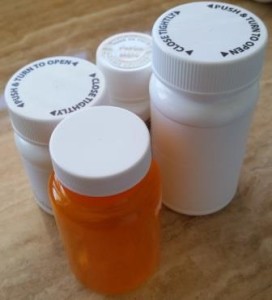 The Banner Alzheimer’s Institute and Novartis are collaborating on a drug study to prevent beta amyloid plaques from accumulating in people’s brains. Whereas, treatments have focused on delaying the decline in symptoms after one is diagnosed, this study aims to treat people even before symptoms become apparent.
The Banner Alzheimer’s Institute and Novartis are collaborating on a drug study to prevent beta amyloid plaques from accumulating in people’s brains. Whereas, treatments have focused on delaying the decline in symptoms after one is diagnosed, this study aims to treat people even before symptoms become apparent.
I can’t help but wonder: It this a promise of hope or a nightmare?
Promise of Hope
I advocate for clinical trials.
My late father, who lived with Alzheimer’s, participated believing if he could help further knowledge about the disease, it was worth it. Although, he admitted, “Maybe not for me, but for others.”
How else can we take steps to stem the tide of dementia striking ONE person around the world every FOUR SECONDS?
Many of us are already aware of how this will bankrupt families and nations’ healthcare programs.
Beyond financial, there is a heavy toll paid by families who care for loved ones with dementia. Too many caregivers succumb to depression and other stress-related health ailments.
The Banner-Novartis study’s aim is to prevent the harmful beta amyloid plaques – hallmarks of Alzheimer’s disease – from building in the brain.
If they can achieve this or even get close, it will be what millions of families around the world are asking (begging) for, including my own. Alzheimer’s struck both sides of my family and this raises the chance that my siblings and I might encounter this unwelcome disease.
Participating in clinical studies comes at a price.
Or a Nightmare?
Despite the promise of privacy and confidentiality, participants get a clue what the diagnosis is after they qualify for a study, unless they’re in a double-blind study. And those who learn they have dementia and/or the APOE4 gene can’t keep this information private when completing forms. What happens when they reach the question on an insurance application: Have you been tested for dementia, Alzheimer’s, or APOE4 gene?
From the Banner-Novartis article (linked below):
The five-year APOE4 trial will involve more than 1,300 cognitively healthy older adults, ages 60 to 75, at high risk of developing symptoms of Alzheimer’s because they inherited two copies of the APOE4 gene—one from each parent. About 2 percent of the world’s population carries two copies of this gene, and one in four people carry one copy of the APOE4 gene, which is strongly linked to late-onset Alzheimer’s.
Of course, there’s still that issue of STIGMA.
Once diagnosed, stigmas are felt from strangers and even friends and family.
Consider the well-meaning family member who is understandably shocked by the diagnosis, who then tries to be overly helpful. “Here, I need to go to the store, too. I’ll drive you.” “Are you sure you want to walk to the park? It’s two miles across busy intersections.”
To the person diagnosed, this is devastating. One day s/he is functioning somewhat independently, the next, s/he becomes an invalid viewed through the near-sighted lenses of those who don’t yet understand.
We still have hope.
Clinical studies give us hope that one day there will be a world without dementia. Until then, policies need to adapt to the changing needs of people who may have the biomarker but no symptoms.
Remember, we’ve been down a long road of researching beta-amyloid plaques with many promises but no cure. Yet, we hold onto hope.









Anything that can lead to a breakthrough in the cure for Alzheimer’s is a positive in my book. Yes, clinical trials can be controversial at times, but you rightly point out that one new case of dementia is diagnosed every four seconds globally so the more trials that are done, the closer we will be to finding a cure. Considering that 47.5 million people live with dementia and that the number of dementia cases are projected to triple by 2050, further research and drug trials are absolutely necessary.
THANK YOU, Alice for reiterating the importance of finding a cure despite the challenges that come with participating in clinical drug studies.